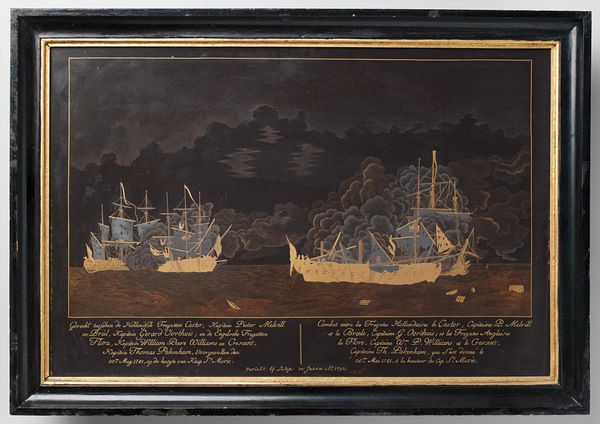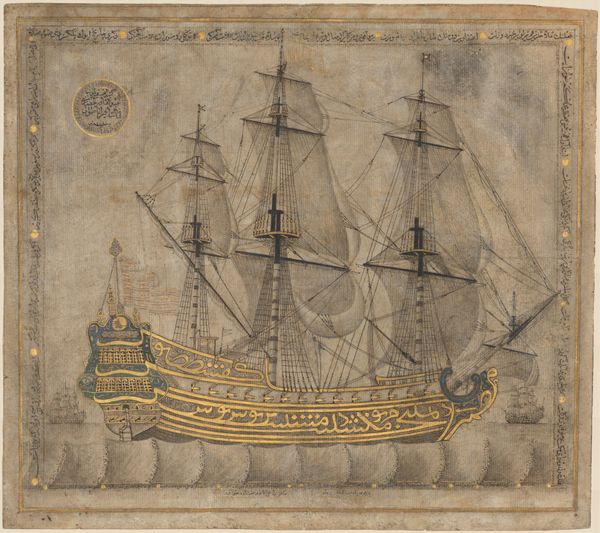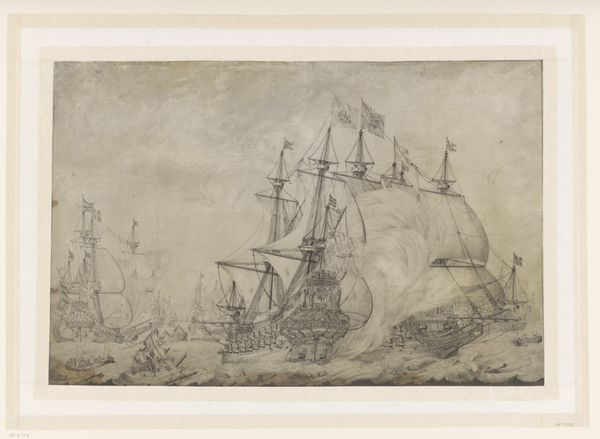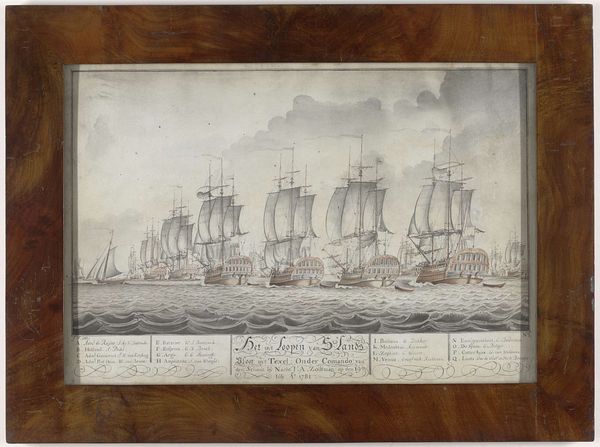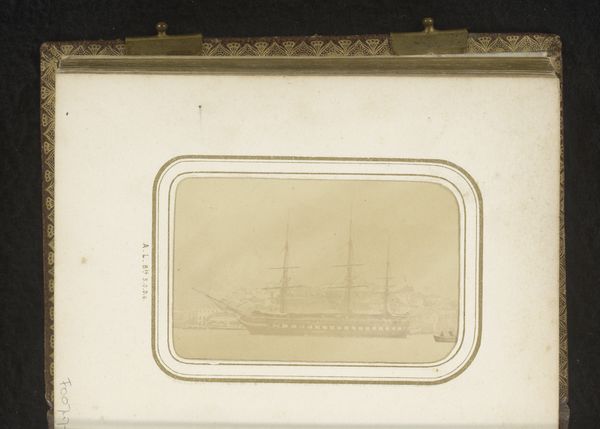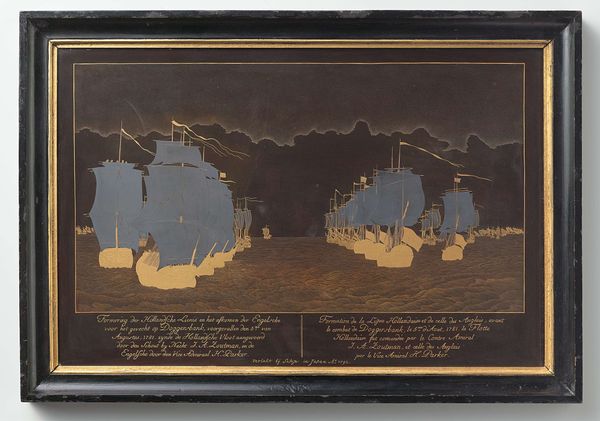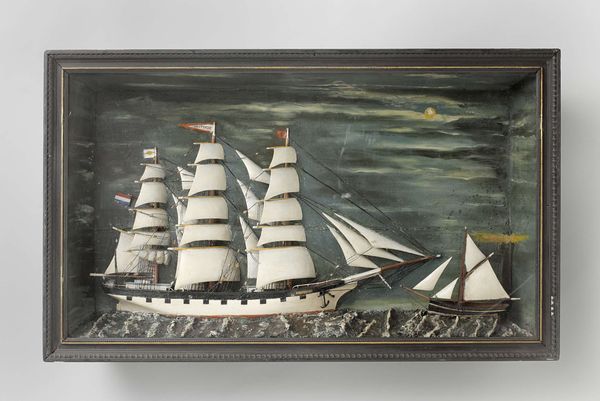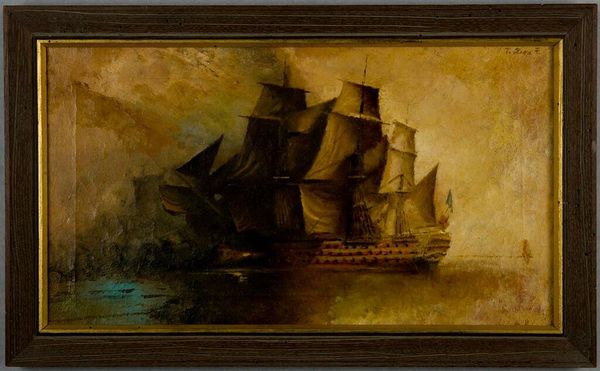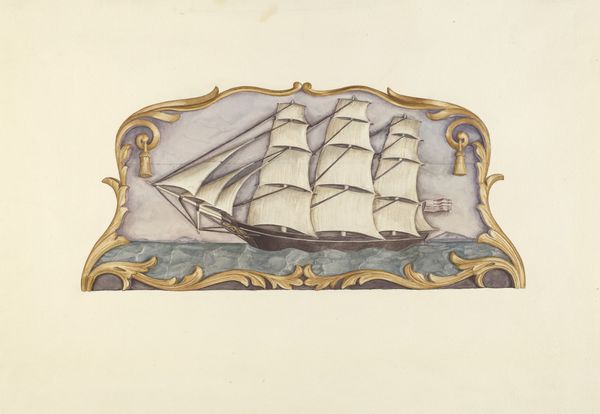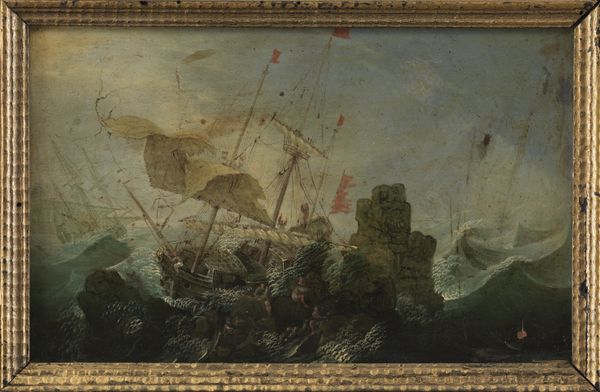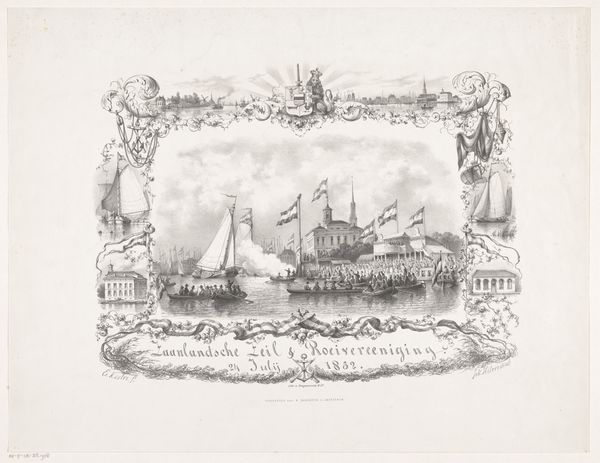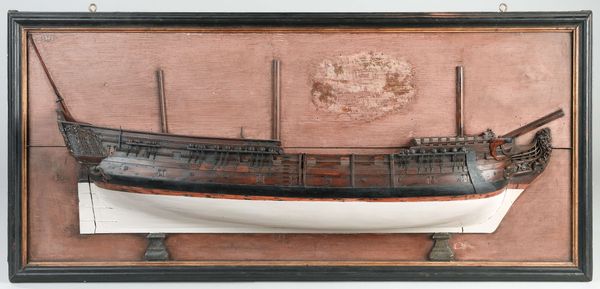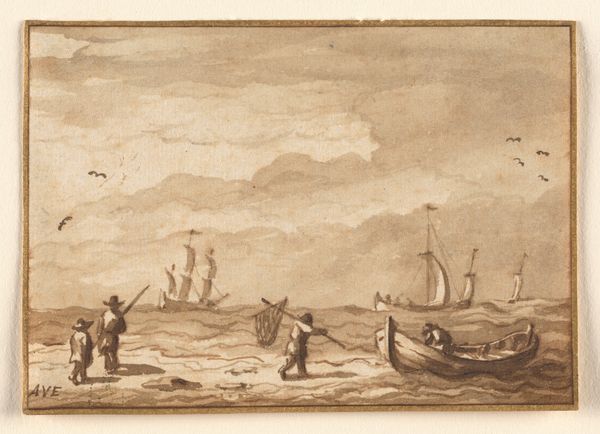
Dimensions: height 36.5 cm, width 53 cm, depth 3 cm
Copyright: Rijks Museum: Open Domain
Editor: So, this is the "Slag op Doggersbank," or "Battle of Dogger Bank," painted in 1792. It's oil paint, and the scene is quite striking with the gold ships against a dark backdrop. What strikes me most is the kind of simplified representation – what are your thoughts on this piece? Curator: Looking at this from a materialist perspective, I'm fascinated by how the very process of its creation mirrors the socio-economic conditions of the time. Oil paint itself was a commodity, part of the expanding trade networks. Do you notice how the application is so precise, almost like decorative craft? Editor: Yes, I see what you mean! The gold leaf details definitely give it a more decorative, rather than strictly "fine art," feel. How does that relate to its context? Curator: Well, this blending of craft and art complicates our traditional understanding. Was it meant for a wealthy patron to commemorate Dutch naval power and trade success, a celebration of labor and the spoils of war? Think of the labor involved in shipbuilding, the production of the paint itself – this painting is the end result of extensive material processes. Editor: So, it's not just *depicting* the battle, but also a product *of* the economic systems surrounding naval power? Curator: Precisely! Consider the accessibility of the artwork. Was it made for the elite, or did printed versions circulate to shape public opinion? The medium itself participates in shaping narratives of power and consumption. Editor: That's fascinating. I've never really thought about art in this way, seeing the connection to all the labor and resources that go into creating even a single painting. Curator: It really encourages us to look beyond the surface, right? The story is in the materials and the making as much as the image itself.
Comments
No comments
Be the first to comment and join the conversation on the ultimate creative platform.
